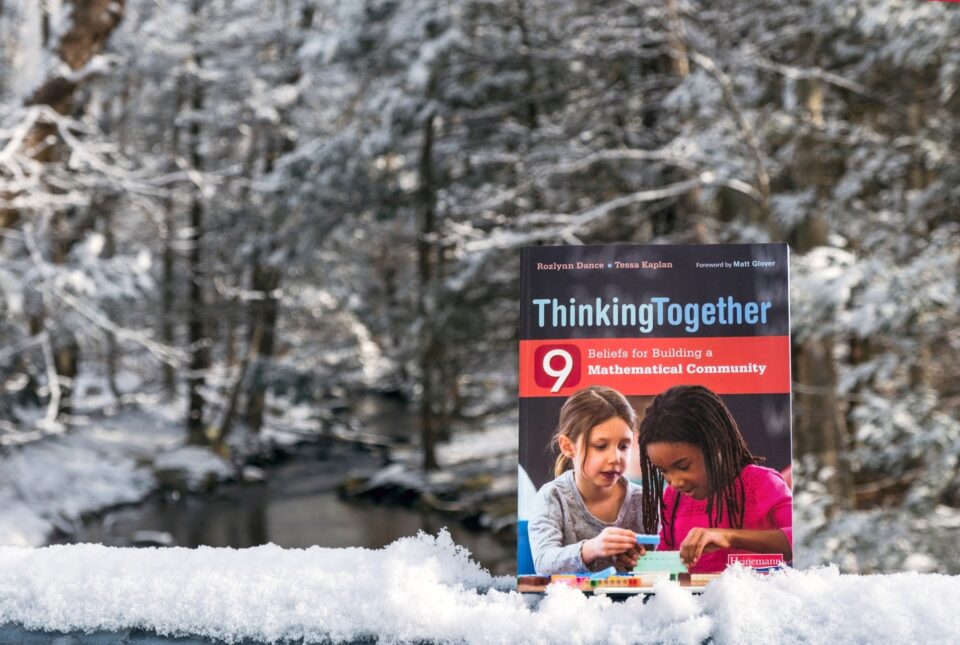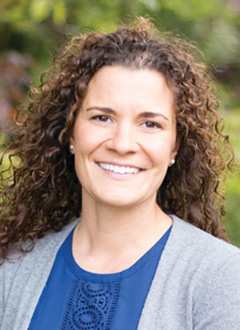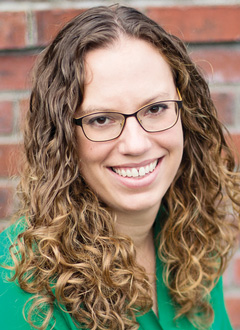
Adapted from Thinking Together by Rozlynn Dance & Tessa Kaplan.
Adapted from Thinking Together by Rozlynn Dance & Tessa Kaplan.
One way to encourage students to embrace mistakes and learn from them is to ask students who have made common mistakes to share their thinking with the class. In the first week or two of school, as students are working on a difficult problem, look for a student who is fairly confident already to share a mistake they’ve made on a math problem. Ideally, it should be a mistake that you see several students making, so that more of the class will relate to the student who shares. It is important that the first student to share a mistake for the year be one who already shows signs of confidence in math and is okay with sharing that they made a mistake. Be sure to talk with the student prior to sharing and privately discuss the importance of sharing mistakes with others so that the student is prepared to discuss the mistake in front of the class. While you will later choose all students to share mistakes, sharing a mistake for the first time can be daunting, since most students will not come in with the idea that mistakes are great!
Before the student shares, prep your class with a whole-group discussion about mistakes. Remind them that mistakes help our brains grow and that when we make a mistake we just make our brains stronger. Then tell the class that you have a student who has decided to be very brave and share a mistake they made while persevering through a problem. Emphasize how proud you are of this student for being so brave. Thank the student profusely in front of the class for sharing. You can’t overdo the praise here in this first difficult share.
After the student shares, thank them again by saying, “Wow! That was such a great mistake!” Turn to the class and ask the students how many other students made that same mistake. Encourage students to be brave and raise their hands. This both reassures the student who is sharing and opens the gates for the rest of the class to begin owning the fact that we all make mistakes. Again, you can’t overdo the praise here. Say things like, “Thank you so much for helping us all learn from your great mistake today!” Label your public record of student strategies with the words “Great mistake!” for this student. Have the class cheer and snap for the student for being so brave. You will not have to make such a big deal in the future for students who share mistakes, but for the first few times you need to ensure that the students understand how important it is to be brave, share your mistakes, and help others learn from them.
Pointing out our own mistakes when we make them as teachers can also be powerful. We often follow our mistake with, “I’m so glad I did that because I just learned something and I know I probably won’t make that mistake tomorrow.”
Continue to call mistakes “great mistakes” throughout the school year. You will notice your students begin to use this term with one another. “I notice that you made a great mistake here!” and “Thanks for sharing that great mistake!” will be phrases that you begin to hear around the classroom if you continue to reinforce this norm throughout the school year. As students become more comfortable making mistakes, be sure to reinforce the idea that while making the mistake is valuable, the most important idea is to reflect upon it and learn from it.
Once students are comfortable with the idea that mistakes are great, it is important that they begin to notice them on their own. As with self-correcting while reading, we want our students to notice when they are making a mistake and make attempts to remedy it. One way to get students to begin looking for mistakes is to have them “find the mistake” that a classmate made in their work. When students are problem-solving during a work session, look for a student who is showing a common misconception in their work. Ask this student to share. Before they share, tell the students that the child who is sharing has made a mistake in their work. Their job is to be detectives and see if they can figure out the mistake that was made. Have them search for the common misconception instead of simply telling them.
Another option is sharing student work from a student you had previously in a different class. Share with your class that this was work from a previous student who has given you permission to share their “great mistake” with this year’s class. Then you can go through the same routine of looking for and talking about the mistake. This works well if the students in your class seem especially sensitive to making mistakes or if your class is still learning to embrace their own mistakes.
After you have practiced finding mistakes a few times, you will begin to notice that your students will look for “great mistakes” in their classmates’ work. Be sure you continually compliment any child who makes or shares a great mistake, and be conscious of keeping the attitude toward making and correcting mistakes very positive.
You can take finding mistakes a step further by asking students to think through the cause of a mistake. Practice thinking through a mistake by giving students an incorrect answer to a problem. Their task is to figure out what the student could have done in order to produce the incorrect answer. This process does several things for your students. First, it acknowledges that mistakes can come from good thinking. Just because a mistake was made doesn’t mean that deep mathematical thought didn’t go into it. Second, thinking through a problem in order to figure out the root cause of someone else’s mistake demonstrates and develops deep mathematical understanding of the concept.
Inevitably, as students begin sharing and pointing out mistakes, disagreements will arise. It is important to set up structures in your room for how students show agreement and disagreement. We use two hand signals to show these feelings. When students agree with one another, they make the shape of a Y with their hands (middle three fingers down, thumb and pinky pointing out). They point their thumb at themselves and their pinky at the person they agree with, shaking it between them. In American Sign Language, this sign means “same as you.” By using this sign, students show that they are connecting with their classmate and are thinking similarly.
Showing disagreement can be more difficult. Many teachers use thumbs-up and thumbs-down signs for agreement and disagreement. While thumbs-up signs work great for agreement and can be encouraging, looking around the room and seeing lots of thumbs-down signs can be very discouraging. Other teachers like to use the phrase “I respectfully disagree” to show disagreement. It is important to keep a positive connotation associated with the word disagreement. You can also encourage students to say they are “thinking differently.” The visual symbol for “thinking differently” or “disagreeing respectfully” is tapping your pointer finger on your forehead (brain). For a child who is sharing, it is much more encouraging to look around and see students tapping their brains instead of a sea of thumbs-down signs.
Disagreements can also be encouraged through mathematical tasks that present two arguments for an answer or way of thinking. The student’s job is to then choose which argument they agree or disagree with and justify their thinking. Practicing these disagreements on paper can help students develop the conversation skills necessary for oral disagreement. These problems are also great for discussing mathematical mistakes with the class. Some examples of these types of problems are listed below.
| Disagreement Task with One Correct Answer and One Incorrect Answer | Disagreement Task in Which Both Sides Are Correct |
|
Mariana and Valerie are both subtracting 89 from 126. Mariana thinks the answer is 43. Valerie thinks the answer is 37. Who do you agree with, and why? |
Elliot and hunter are trying to show the number 24 on a tens and ones mat. Elliot showed 24 using 2 tens and 4 ones. Hayes showed 24 using 1 ten and 14 ones. They are having an argument about who is correct. Who do you agree with, and why? |
• • •
To learn more about Thinking Together and download a sample chapter, visit Heinemann.com
 Rozlynn Dance is a first grade teacher in Federal Way, Washington with more than a decade of elementary classroom experience. She has worked closely with colleagues developing curriculum and providing mathematical professional development for K–5 teachers. Follow her on Twitter @RozlynnDance
Rozlynn Dance is a first grade teacher in Federal Way, Washington with more than a decade of elementary classroom experience. She has worked closely with colleagues developing curriculum and providing mathematical professional development for K–5 teachers. Follow her on Twitter @RozlynnDance
 Tessa Kaplan is a K–6 Instructional Coach in Shoreline, Washington who is passionate about helping young children truly believe in themselves as mathematicians. She has 10 years of classroom teaching experience in public schools in Brooklyn and Washington State. Follow her on Twitter @TessaKaplan84
Tessa Kaplan is a K–6 Instructional Coach in Shoreline, Washington who is passionate about helping young children truly believe in themselves as mathematicians. She has 10 years of classroom teaching experience in public schools in Brooklyn and Washington State. Follow her on Twitter @TessaKaplan84


